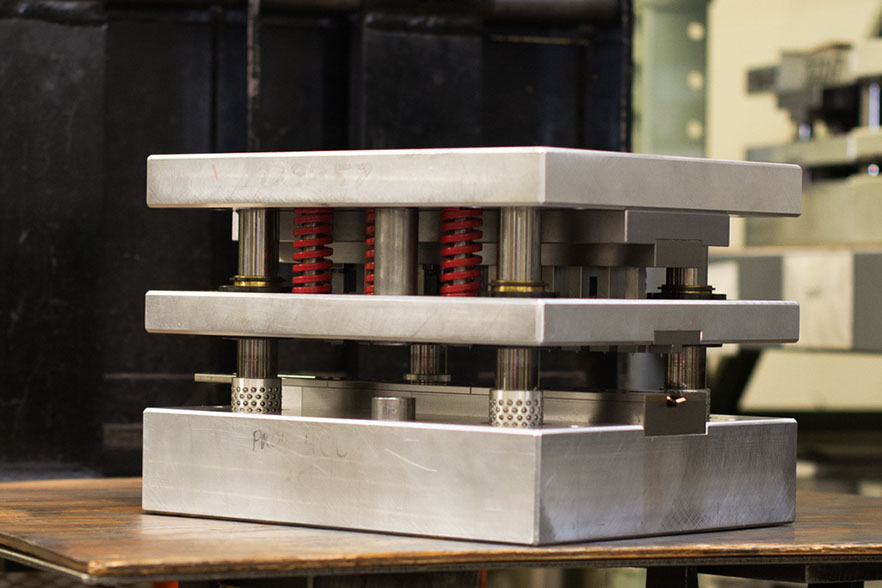 Metal stamping is a process that involves the forming of a metal material by using a heavy tonnage press. This process shapes the metal but it also produces burrs – excess material by the edges of the resulting metal part.
Metal stamping is a process that involves the forming of a metal material by using a heavy tonnage press. This process shapes the metal but it also produces burrs – excess material by the edges of the resulting metal part.
Usually, the metal stamping process specifications include a burr allowance of 10% of metal thickness. Nevertheless, complex parts may need a deburring process after stamping or the use of a more complex stamping process. It is not unusual for metal stampers to work closely with part designers to ensure that critical specifications are met, in terms of expected burr and its impact on the accuracy of the process. Also, metal stampers may recommend the use of various deburring methods.
Main Reasons Why Metal Stampings Require Deburring
Steel, stainless steel, brass and copper are among the materials that require deburring after stamping. Here are the main reasons why:
– Safe handling during the manufacturing process and in-service
– Avoidance of cutting or abrasive effects on insulated wiring
– Enhancement of the part’s appearance
Another good reason to deburr is the need to remove the discoloration resulting from brazing or welding, the scale resulting from heat treatments, and the various unwanted contaminants, rust or oxidation.
The Deburring Process Explained
Barrel and vibratory finishing are the most common deburring methods. They consist from tumbling or vibrating the parts in an abrasive environment, followed by cleaning. The micro-deburring of more complex parts can be done by electropolishing, even though this process is more expensive. Barrel and vibratory deburring also removes various contaminants such as oil. Electropolishing removes surface metal and polishes the surface to obtain a mirror-like effect.
Barrel Deburring
Barrel deburring is a contact process in which the parts get into contact with each other in an enclosed barrel that rotates. This constant hitting helps eliminating burrs, but it can also damage the parts. This is why it only works for sturdy parts. The biggest advantage of barrel deburring is that it can handle large numbers of parts at the same time.
Vibratory Deburring
Vibratory deburring uses a vibrating channel. Suitable for more fragile parts, this process makes use of different media depending on the type of metal and the shape of the part. Here are a few of the most commonly used media:
– Ground corn cobs that have the consistency of sawdust
– Stone
– Aluminum oxide powder
– Plastic
– Ceramic
Electropolishing
Electropolishing removes a thin layer of metal by using electrolysis. The part is immersed in a blended chemical electrolyte and an electrical current is applied. This method works best for delicate stampings other deburring methods could damage. The transfer of ions that occurs in the electropolishing process is faster on the edges of metal parts. This is how deburring actually occurs.
Stamped Metal Parts Requiring Deburring
– Brackets
– Medical devices parts
– Terminals
– Washers
Seek For Deburring Advice Form A Metal Stamping Engineer
Many manufacturers make specifications in regard to the need for deburring. However, metal stamping engineers are the ones that can provide useful advice on the expected burrs and the ideal methods to remove them. In addition, metal stampers can recommend you a reliable deburring or electropolishing provider to ask for a quote on your project. They can also coordinate with your provider of choice to schedule the finishing in line with your objectives and with your manufacturing process schedule.






